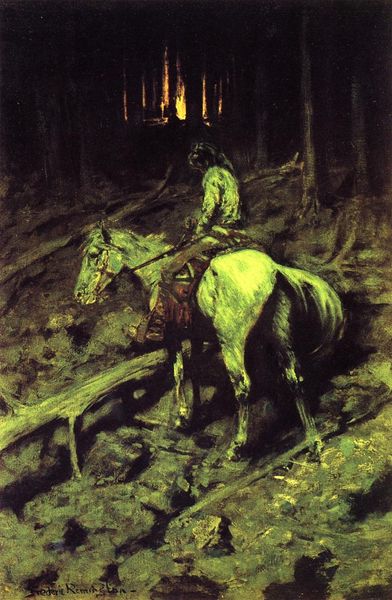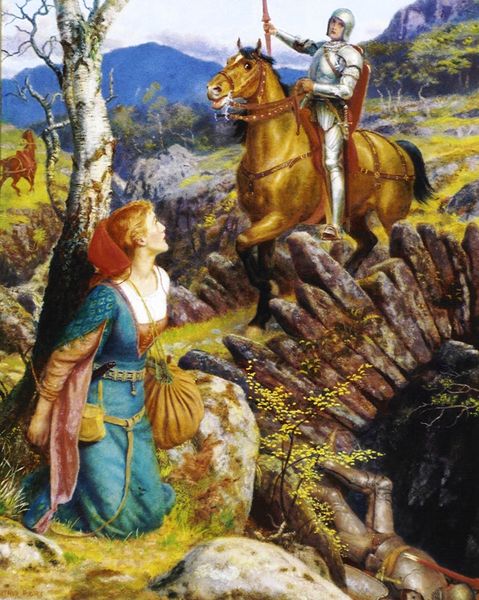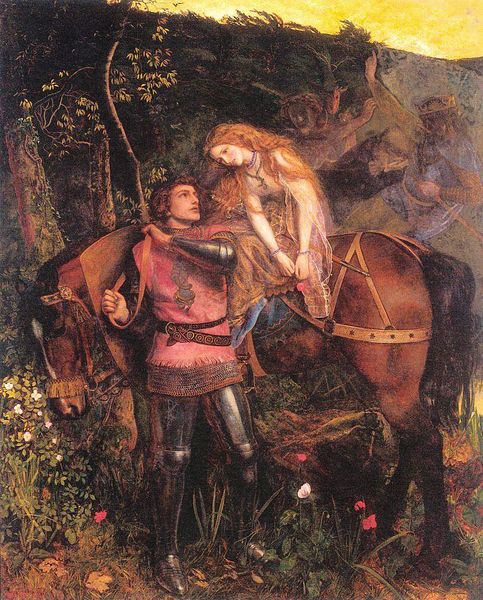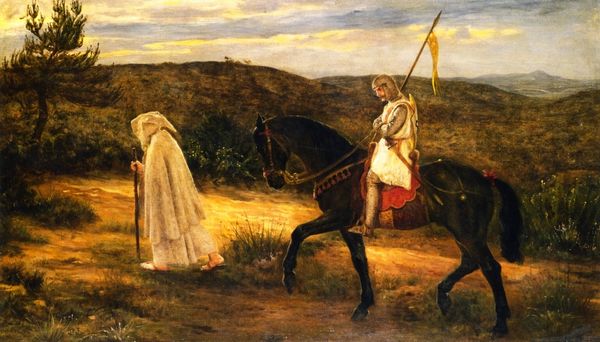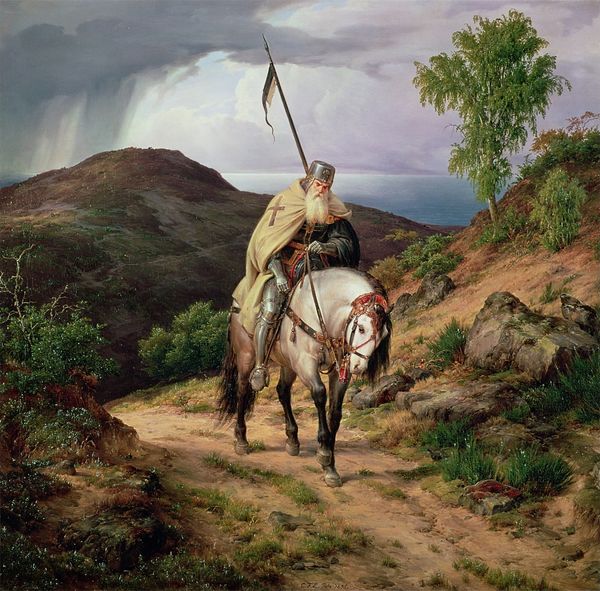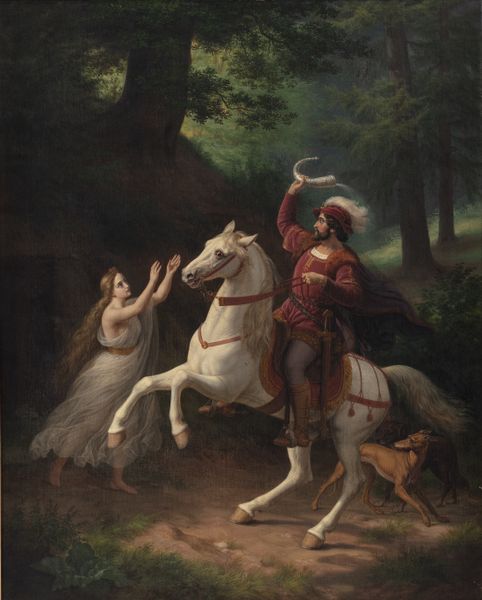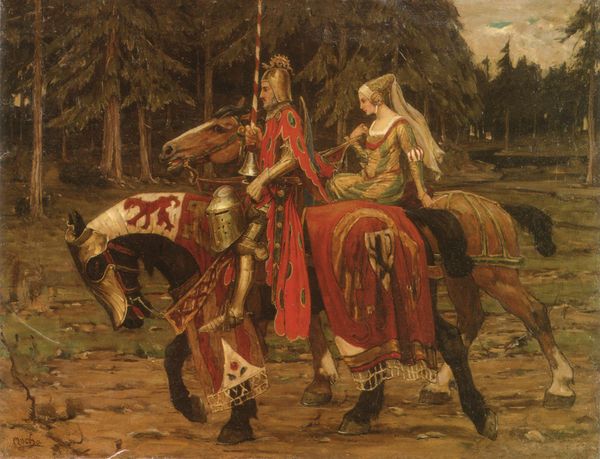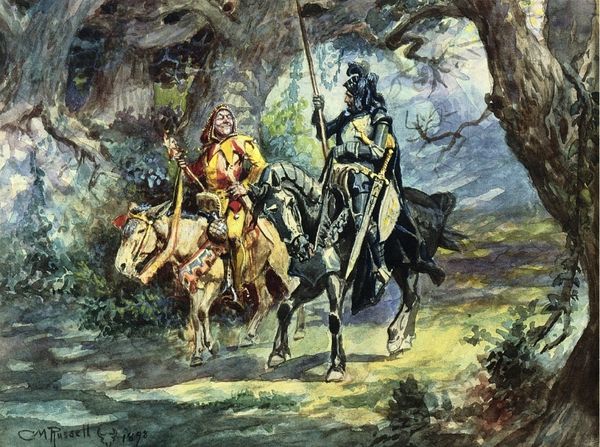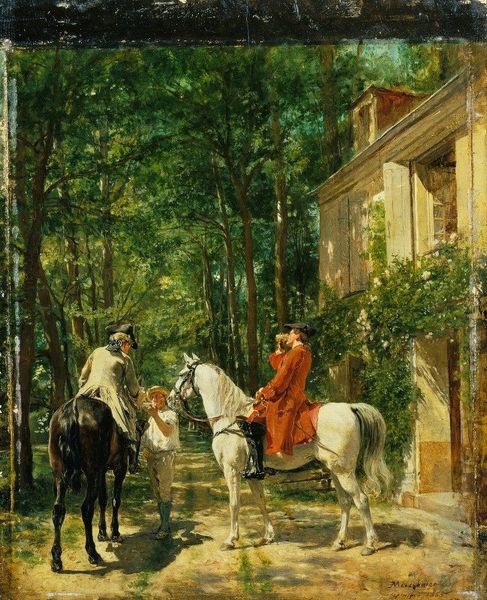
Copyright: Public Domain: Artvee
Editor: Walter Crane's "La Belle Dame Sans Merci," created around 1865 using oil paint, is fascinating. The scene feels dreamlike, yet unsettling. What strikes you about this piece? Curator: It’s impossible to ignore the pre-Raphaelite leanings in Crane’s depiction. It places this encounter within a very specific socio-political frame: a nostalgic, perhaps romanticized, medievalism but also a potent commentary on Victorian gender dynamics. Look closely at the woman. Who holds the power here, and how is Crane using her image to either subvert or reinforce those norms? Editor: I see what you mean. She's on horseback, elevated above the knight. It feels like a reversal of traditional power. Is Crane trying to critique the idealized image of women? Curator: Precisely. This artwork, emerging in the mid-19th century, sits squarely within the debate of the “New Woman.” Is she a femme fatale, seducing and ultimately destroying the knight, a cautionary tale about female agency? Or is she a figure of liberation, rejecting patriarchal constraints and embracing her own desires, even if it leads to ruin? How do the moon and the dark forest around them factor into your interpretation? Editor: It feels like the forest embodies her domain, wild and free from social constraints, with the moon signaling a kind of forbidden knowledge. I never would have seen the Victorian gender commentary had you not mentioned it. Curator: It’s vital to see how art becomes a stage where societal anxieties play out. It's important to analyze how an image simultaneously reinforces and questions dominant power structures of that era. Editor: I’ll never see paintings like this the same way again. It's so much more than just pretty scenery. Curator: Indeed. The beauty of Crane's work lies in its capacity to invite us into this intricate dialogue with the past. Art always converses with the issues of its time.
Comments
No comments
Be the first to comment and join the conversation on the ultimate creative platform.
